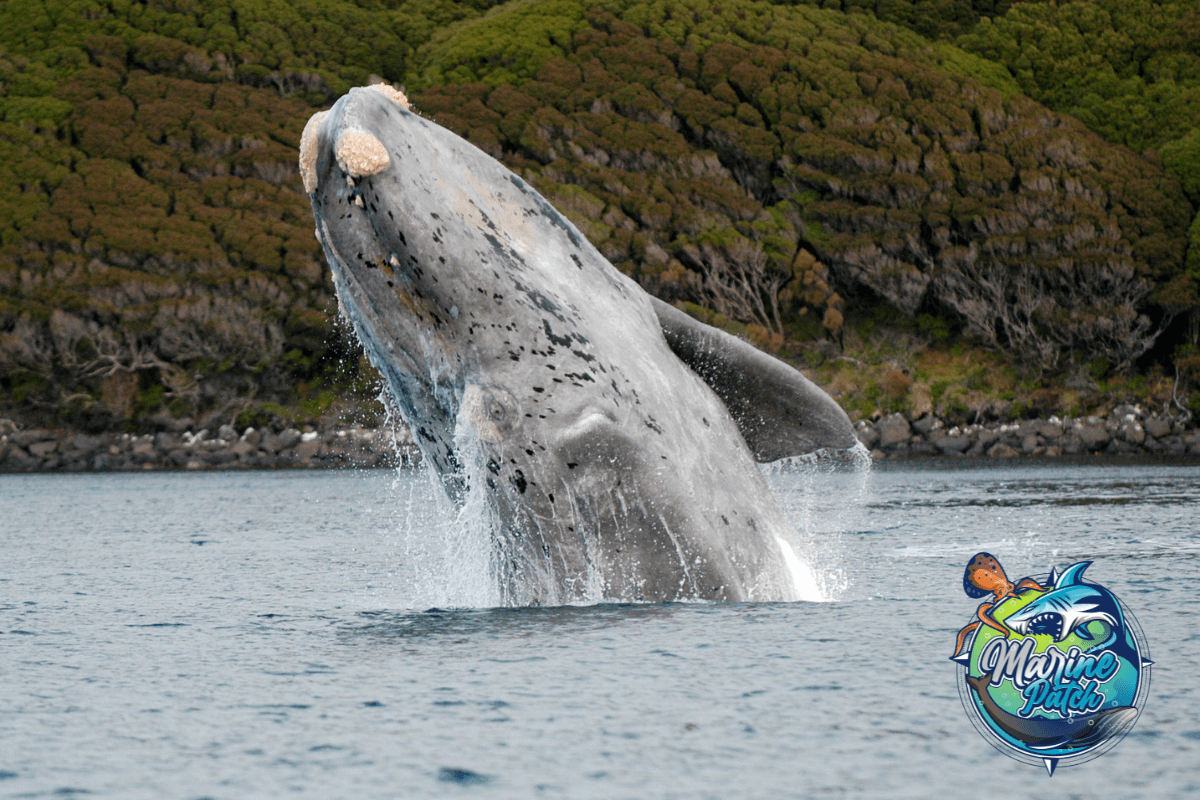As one of the world’s largest and most diverse continents, Africa is home to an incredible array of wildlife, including some of the most magnificent creatures to ever inhabit our planet – whales.
Despite being more commonly associated with the icy waters of the Arctic and Antarctic, Africa’s coastlines are home to a surprising variety of whale species.
From the acrobatic humpback whale to the gentle southern right whale, Africa’s waters offer a unique opportunity to witness some of the world’s most awe-inspiring marine mammals.
So if you’re heading to Africa and want to learn more about the whale species that live there, you’re in the right place!
In this post, we will explore 5 types of whales in African waters, and learn more about their behaviors, habitats, and conservation status.
So sit back and enjoy as we deep dive into the whales of Africa.
1. Southern Right Whale
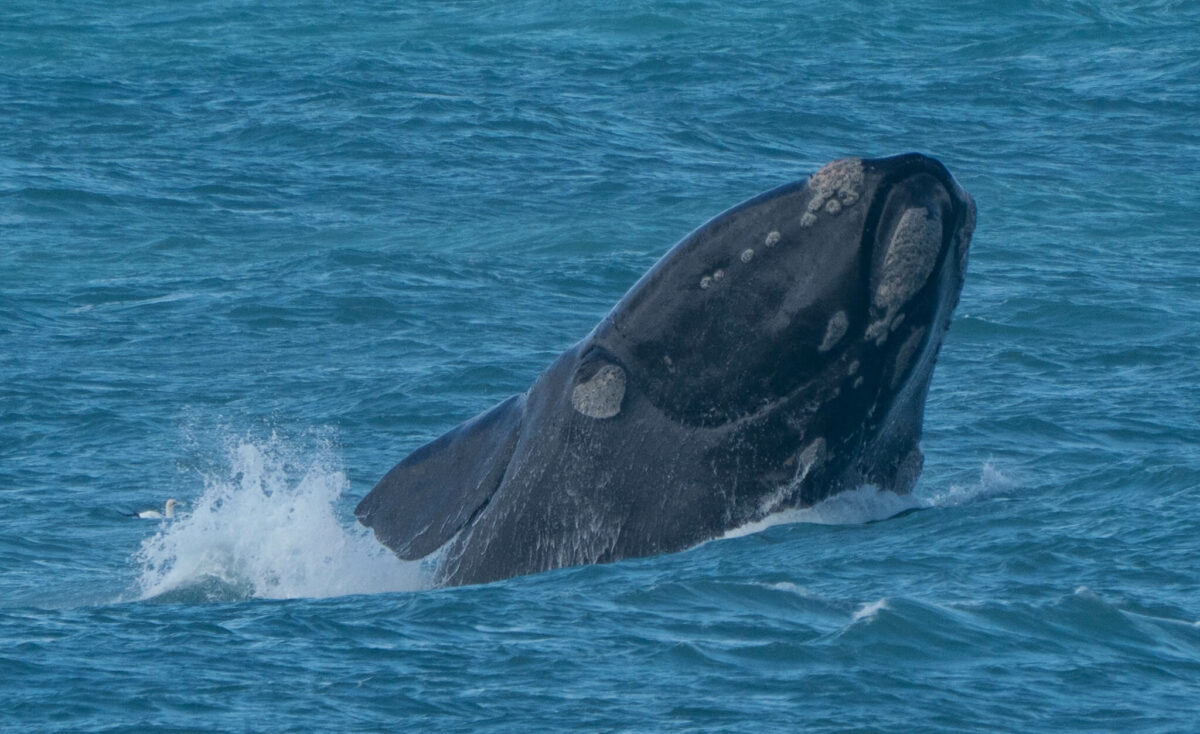
Southern right whales are one of the largest whale species found in the world’s oceans.
They are known for their distinctive V-shaped blowhole spray, stocky build, and lack of dorsal fin.
These gentle giants are huge and can reach lengths of up to 18 meters and weigh up to 80 tons.
In Africa, southern right whales are commonly found along the coasts of South Africa, Namibia, and sometimes even further north.
They migrate to these waters during the winter months, where they come to mate, calve and nurse their young.
The bays along the South African coast, particularly the towns of Hermanus and Plettenberg Bay, are famous for their whale-watching opportunities, with southern right whales being the star attraction.
So if you’re headed to the coast, be sure to pack a pair of binoculars and keep a lookout for these beautiful whales.
Southern right whales were heavily hunted during the 19th and 20th centuries, which caused their population to decline drastically.
Today, however, their numbers have recovered somewhat, thanks to recent conservation efforts.
Southern right whales are now protected by law in many countries, and their populations are monitored to ensure their continued survival.
Despite this, southern right whales still face threats such as entanglement in fishing gear, collisions with boats, and disturbance from human activities.
This is why it’s essential to continue monitoring their populations and to take measures to reduce these threats so that we can ensure the long-term survival of these magnificent creatures.
2. Humpback Whale

Humpback whales are one of the most acrobatic and vocal of all the whale species.
Humpback whales can grow up to 16 meters long and weigh up to 30 tons. They are known for their long, pectoral fins and their distinctive, complex songs.
In Africa, humpback whales are found primarily along the coasts of Mozambique, and Madagascar.
They migrate to these waters during the winter months, where they come to mate and give birth.
These whales are often seen breaching, tail slapping, and spy-hopping, making them a popular attraction for tourists.
Humpbacks play an important role in marine ecosystems and are indicators of the health of our oceans.
Their annual migrations from cold, nutrient-rich waters to warm, tropical waters make them key players in ocean ecosystems, as they transport vital nutrients and support other marine species.
Protecting humpback whales is not only important for their survival but for the health of our oceans as a whole.
3. Sperm Whale
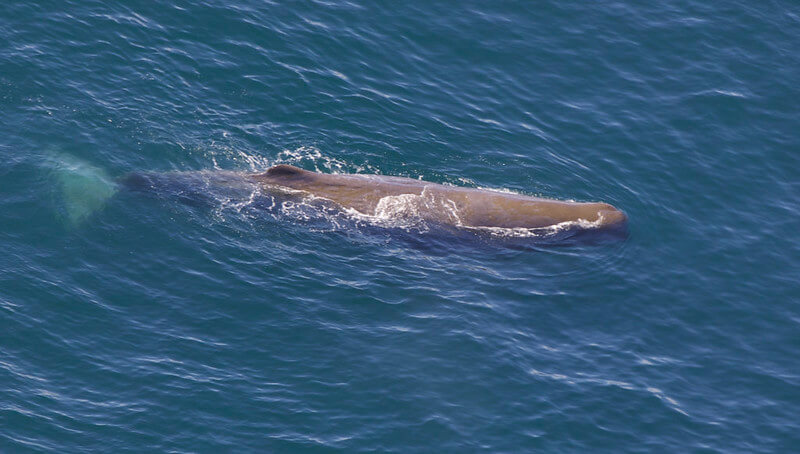
Sperm whales are the largest of the toothed whales and are found in all the world’s oceans, including along the coasts of Africa.
These whales can grow up to 18 meters long and weigh up to 57 tons, with their distinctive squarish head making them easily recognizable.
They are known for their deep diving abilities and are the deepest diving of all marine mammals, often diving to depths of over 1000 meters in search of their preferred prey – squid.
In Africa, sperm whales are also found primarily along the coast in areas such as Namibia, and Mozambique.
They migrate to these waters during the winter months, where they come to feed and socialize. Sperm whales are often seen in groups called pods, which can contain up to 20 individuals.
Sperm whales are known to have a diverse diet, feeding on a variety of species including squid, octopus, and fish.
In some areas, they are known to prey on deep-sea creatures such as giant squid, which can grow up to 13 meters in length.
The ability to hunt these deep-sea creatures is believed to be one of the reasons why sperm whales have such large heads, as they house the complex sonar system that allows them to navigate and locate prey in the darkness of the deep sea.
In addition to being important top predators, sperm whales also play a vital role in the carbon cycle.
They are known to store large amounts of carbon in their bodies and when they die, their bodies sink to the ocean floor, taking that carbon with them.
This process helps to regulate the amount of carbon in the atmosphere, making sperm whales an important player in the fight against climate change.
But count yourself lucky if you see a sperm whale in Africa as these giants prefer to remain in the depths hunting for prey.
4. Killer Whales
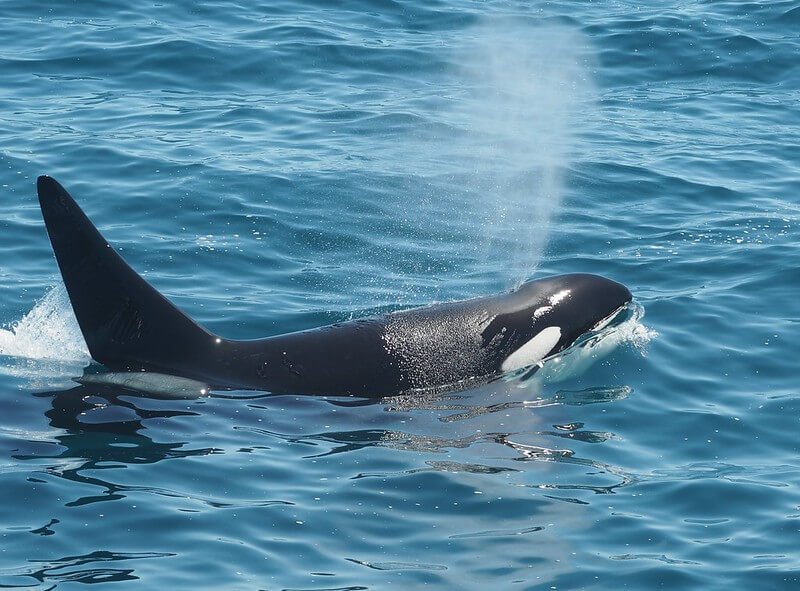
Killer whales, also known as orcas can be found off the coasts of Africa, in fact, two individuals known as “Port” and “Starboard” are regularly seen hunting around the South African coastline.
These apex predators are known for their intelligence, complex social structures, and ability to take down prey much larger than themselves.
In Africa, killer whales are primarily found along the coast, where they are known to feed on a variety of prey including seals, dolphins, and whales.
One unique aspect of killer whale populations in Africa is that they are known to exhibit a distinct feeding strategy known as “beach-hunting.”
This behavior involves killer whales intentionally beaching themselves on sandy shores to catch prey such as Cape fur seals.
While this behavior is not exclusive to African killer whales, it is rarely observed in other populations around the world.
African killer whales have also been observed preying on great white sharks, ripping them apart and feasting on their fatty livers.
Killer whales face a range of threats in African waters, including pollution, habitat degradation, and disturbance from human activities such as boat traffic.
5. Bryde’s Whale
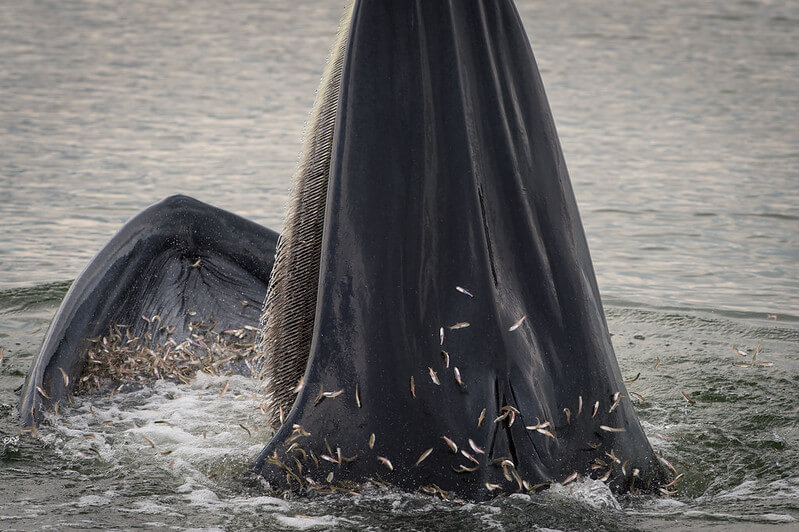
Bryde’s whales are a species of baleen whale found in tropical and subtropical waters around the world, including Africa.
These whales are named after Johan Bryde, a Norwegian whaler who first identified the species in the early 20th century.
Bryde’s whales are relatively small compared to other baleen whales, typically growing to lengths of 11-14 meters.
They are also known for their unique feeding behavior, which involves lunge feeding on small schooling fish and krill.
In Africa, Bryde’s whales are commonly found in the waters off the east coast, where they feed on sardines, anchovies, and other small fish.
Like other baleen whales, Bryde’s whales produce a variety of sounds, including low-frequency moans and groans, which are thought to be used for communication and navigation.
Recent studies have shown that the vocalizations of Bryde’s whales in African waters are distinct from those of other populations around the world, suggesting that they may have a unique dialect or language.

Hi, I’m George – the founder of MarinePatch. I created this blog as marine wildlife has been my passion for many years. I’ve spent over a decade in the marine wildlife industry and spent years out in the field conducting research. In today’s modern world, an online blog is the best place for me to share my findings and reach as many people as possible to help educate and inspire others. Enjoy your time here and you’re welcome back anytime!

